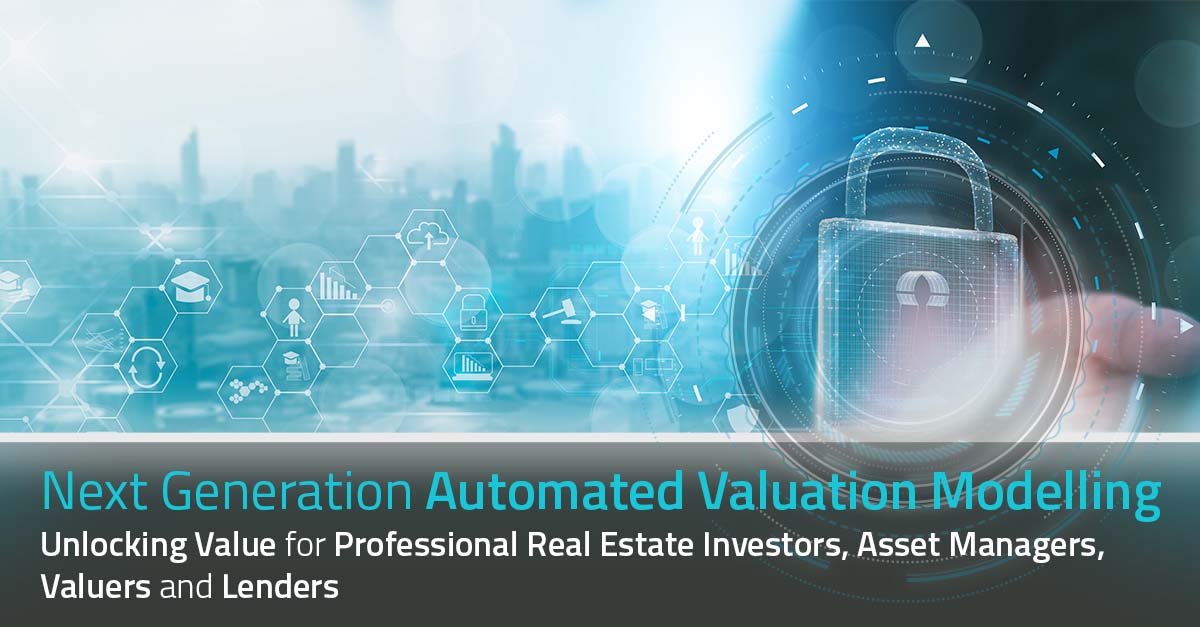
Accurate, timely asset valuation and line of sight on trends are fundamental to key judgement calls throughout the real estate lifecycle. Better current and predictive valuation can create performance edges at every stage from pre-entry diligence through development, reporting and ultimately to exit.
Traditional real estate appraisals can be slow, costly and overly reliant on historic, narrow data-sets, with the potential for high error rates of up to 16% according to research quoted in a Forbes’ feature last year, relating to buildings worth $1 million or less. Many professional valuers now use technology to inform the judgements they make. However, there is an increasing case for more wholesale automation through Automated Valuation Models (AVMs), which still respects and augments the specialist expertise of experienced practitioners.
Historically, the small, lumpy, siloed nature of property data, in particular commercial property data, has been seen as a challenge for AVMs, which work best across deep, broad datasets. However, a step-change in the speed and sophistication of Artificial Intelligence-based tools, capable of working through the data challenges, alongside a proliferation of larger, public and proprietary datasets, has changed the game.
Put simply, we’ve moved from hundreds of data points per building to tens of thousands, opening up a next generation AVM landscape for those with the industrial scale tech and data platforms to capitalise.
At RE5Q, we have a vast amount of global real estate-related data, currently around 9 petabytes which is more than the data of Netflix and Disney combined. That data feeds a versatile A.I. powered platform, engineered by a multi-disciplinary team of world-class programmers, quants, data scientists and artificial intelligence technologists from the likes of Google and Facebook. We deploy the same A.I. technologies as market leaders in other sectors, such as Tesla, HP, Facebook, Google, DeepMind, and many A.I. Research centres around the world, including Cambridge and Oxford Universities, with whom we have worked together on real estate related projects. These technologists work hand-in-hand with real estate domain experts, including our CEO, Martin Samworth, the former Chairman of CBRE’s advisory business in APAC and EMEA.
The AVM models we have built off the back of this powerful platform are, we believe, different in 5 key respects from what we see in the market currently.
Depth and, with that, accuracy
Our A.I. and Machine Learning capabilities allow us to handle more data than traditional models. We have larger, richer data sets, including in adjacent areas, such as company, court, transport, geology, flood, pollution, power grid, satellite, tax, crime, and socio-economic and macro-economic datasets. Our models also automatically integrate and operationalise ESG data and pandemic resilience. We have observed, first hand, with our own valuation models, how more data can enhance robustness and accuracy.
Benchmarked commercial perspective
Over the last year, we have been working to refine our models with a group of leading global real estate firms with more than $3.5 trillion in aggregate assets under management. Our work with this consortium has given us a deep perspective on the needs and preferences of professional investors in commercial markets and, by pooling insight and market experience, enabled us to develop tech-enabled benchmarking and best practice tools in areas of commercial valuation which are evolving rapidly.
Versatility
Our platforms enable users to create comprehensive, customised AVMs by selecting and weighting features, tailoring the models to reflect what they value most. Users can also securely layer on their own data-sets or fresh data-sets created using A.I. They can also benchmark against market indices or bespoke comparables on a portfolio as a whole basis or across specific locations, market or sectors and across different time series, surfacing trends over multiple time periods.
Professional-grade visualisation
Not all maps are created equal. We use gaming industry standard visualisation to surface insights at individual property, portfolio or area level or through the lens of a specific factor, such as embedded carbon scoring. Users can switch between multiple visualisation options, customising viewing angles from over 6000 data layers in formats that seamlessly blend maps, images, numbers and text.
Single platform
All of the above is delivered on a single platform, which can integrate into existing infrastructure to provide rapid adoption and immediate capability enhancement. The CTOs of many of the industry players we talk to, tell us they are currently managing an eco-system of 30+ providers each solving small, individual pieces of the bigger puzzle and producing a weaker and time-consuming overall outcome.
Real estate data is growing exponentially. There is a huge amount of value to be extracted from this wall of data, but only if you know how. Building owners, operators and financiers that leverage the power of Big Data and A.I. through professional-grade real estate data and technology platforms will gain competitive edge, including crucially in the pivotal area of valuation. Those that don’t, risk being left behind.